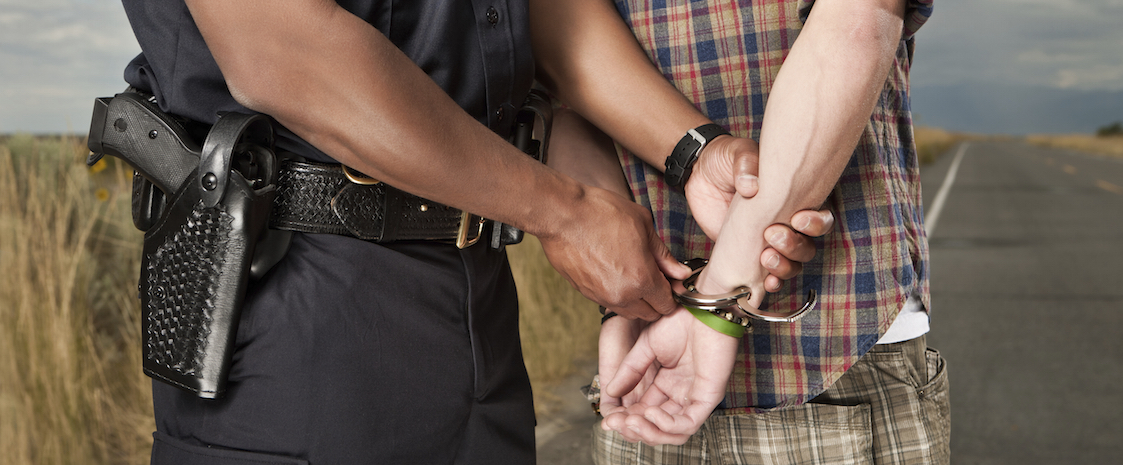People exposed to traumatic situations or events can develop unusually high levels of anxiety; in turn, an ongoing anxiety reaction can contribute to the onset of post-traumatic stress disorder (PTSD) or other stress- or anxiety-related illnesses. In a study published in late 2014 in the American Journal of Public Health, researchers from two U.S. universities analyzed the mental health impact of a group of fairly aggressive police tactics known collectively as “stop-and-frisk.” These researchers concluded that exposure to stop-and-frisk may substantially increase the overall trauma-, anxiety- and PTSD-related burden of the young men typically targeted by these policing tactics.
Trauma and Anxiety
Emotional trauma is an expected, predictable reaction to events and situations that make a person seriously doubt his or her immediate safety and well-being or the safety and well-being of others in his or her vicinity. Most people recover from their experiences fairly quickly and rebound to a psychologically adjusted mental/emotional state. However, some people develop trauma reactions severe enough to interfere with either their short- or long-term ability to function. People with impairing short-term reactions to trauma may meet the criteria used to diagnose an officially defined condition called acute stress disorder. If such reactions last for more than 30 days or only arise 30 days or more after trauma exposure, affected individuals may meet the criteria used to diagnose PTSD.
Acute stress disorder and PTSD once belonged to a category of mental health conditions known collectively as anxiety disorders. However, current guidelines issued by the American Psychiatric Association place these two illnesses in a related but separate category of conditions known as “trauma- and stressor-related disorders.” Diagnosable anxiety disorders, all of which feature some form of a life-impairing reaction to stressful circumstances, include panic disorder, generalized anxiety disorder, agoraphobia, separation anxiety disorder and specific phobia.
‘Stop-and-Frisk’ Police Tactics
In our society, police have an inherent duty to safeguard life, help maintain public safety and identify and arrest those individuals who commit crimes. However, the specific tactics used to meet these goals can vary considerable from city to city or from jurisdiction to jurisdiction. In New York City and certain other locations, police have adapted a fairly aggressive approach called stop-and-frisk. This approach asks individual officers to identify people who, under what’s known as reasonable suspicion, might be actively involved in criminal behavior, might have engaged in such behavior in the recent past or might engage in such behavior in the near future. After making such an identification, police can legally stop the identified individual(s) and perform a brief check of personal belongings. In practice, some critics equate this policing approach with racial profiling, since large numbers of the people subjected to a stop-and-frisk are of African American or Hispanic descent.
Contribution to Anxiety, Trauma and PTSD
In the study published in the American Journal of Public Health, researchers from Columbia University and Yale University assessed the potential impact of the stop-and-frisk approach on the trauma- and anxiety-related mental health of young men. A total of 1,261 men between the ages of 18 and 26 residing in New York City took part in this project between late 2012 and early 2013. Police officers involved in a stop-and-frisk operation had approached the vast majority of these men (85 percent) at some point in their lifetimes. Police had stopped almost half of the participants (46 percent) in the previous 365 days. A small number of the study participants (5-plus percent) had gone through at least 26 stop-and-frisk procedures in their lifetimes.
The researchers concluded that the majority of the study participants were not arrested or sent to jail or prison after a stop-and-frisk encounter. Despite this fact, many of the affected individuals experienced significant indications of increased trauma and/or anxiety. The researchers also concluded that those participants with the highest rate of exposure to stop-and-frisk procedures frequently had symptoms that might qualify them for a diagnosis of PTSD. This fact held true even when they accounted for the study participants’ criminal records and specific socioeconomic and racial/ethnic backgrounds. The single racial/ethnic group most commonly subjected to stop-and-frisk was African Americans; overall, these individuals reported higher levels of trauma than their non-African-American counterparts.
The study’s authors believe that aggressive approaches to policing, such as stop-and-frisk, may significantly compromise the mental health of substantial portions of the U.S. population. They also believe that such mental health outcomes may indicate a need for the implementation of less aggressive community policing tactics.



